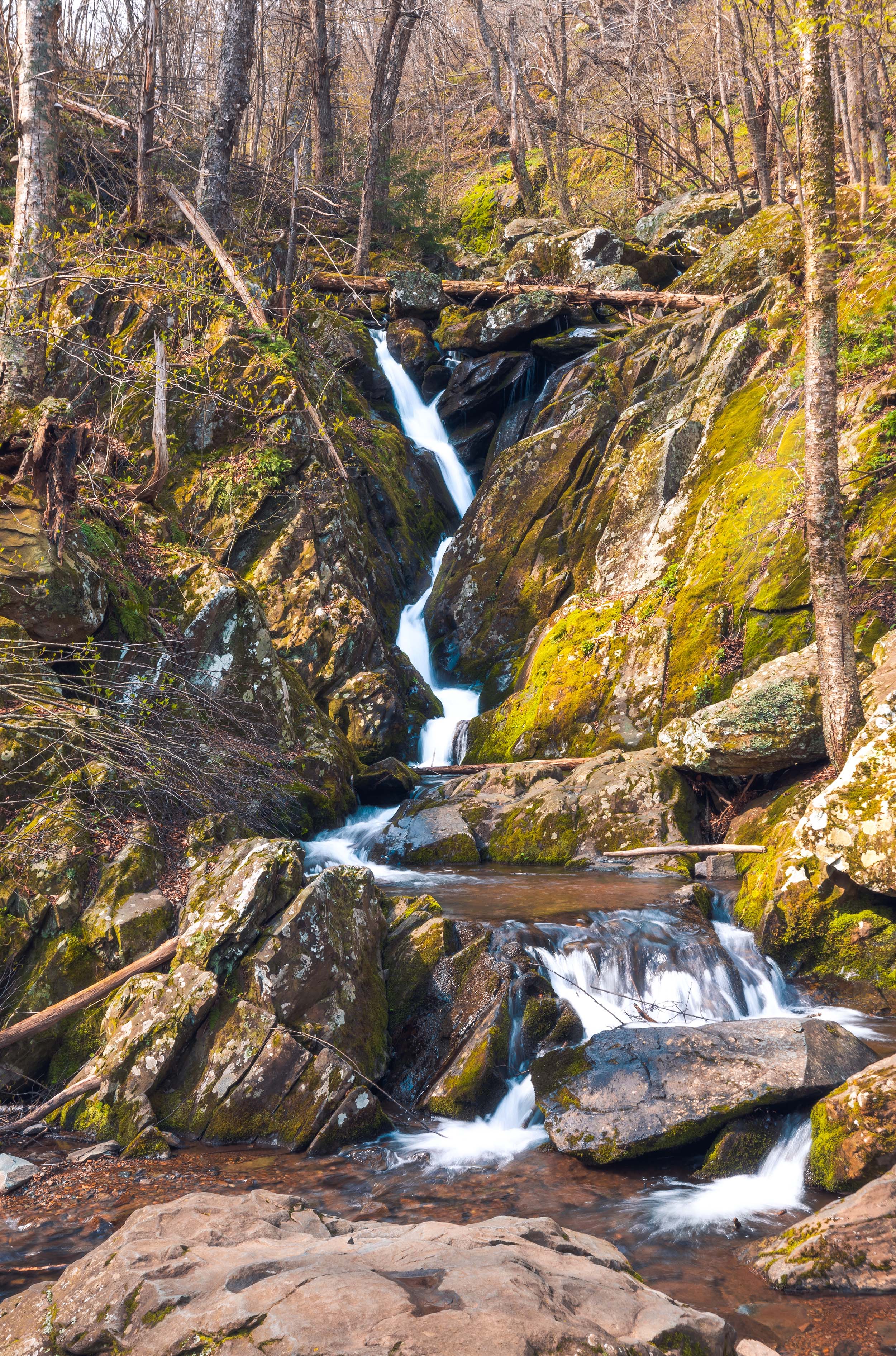Park Information Quick Facts
Location: Virginia
Park Size: 200,000 Acres
Time Needed: 1-2 days
Best Season: Fall or Spring
Must Do: Drive the Skyline Drive
Pro Tips: Arriving early not only guarantees a parking spot at popular trailheads like Old Rag or Dark Hollow Falls but also increases your chances of spotting wildlife and enjoying serene views along Skyline Drive without heavy traffic.
Visitor Centers
Shenandoah National Park boasts two main visitor centers—Dickey Ridge Visitor Center and Harry F. Byrd Sr. Visitor Center—each offering unique experiences for park-goers. The Dickey Ridge Visitor Center, located near the northern entrance at mile 4.6 of Skyline Drive, serves as an excellent first stop for visitors entering the park. It provides a wealth of information on hiking trails, local wildlife, and park history, along with an engaging orientation film. Its outdoor exhibits and nearby Fox Hollow Trail introduce guests to the cultural and natural heritage of the area. The center also offers breathtaking views of the Shenandoah Valley, making it a prime spot for photos or a quick picnic.
Plan Your Shenandoah Adventure Today!
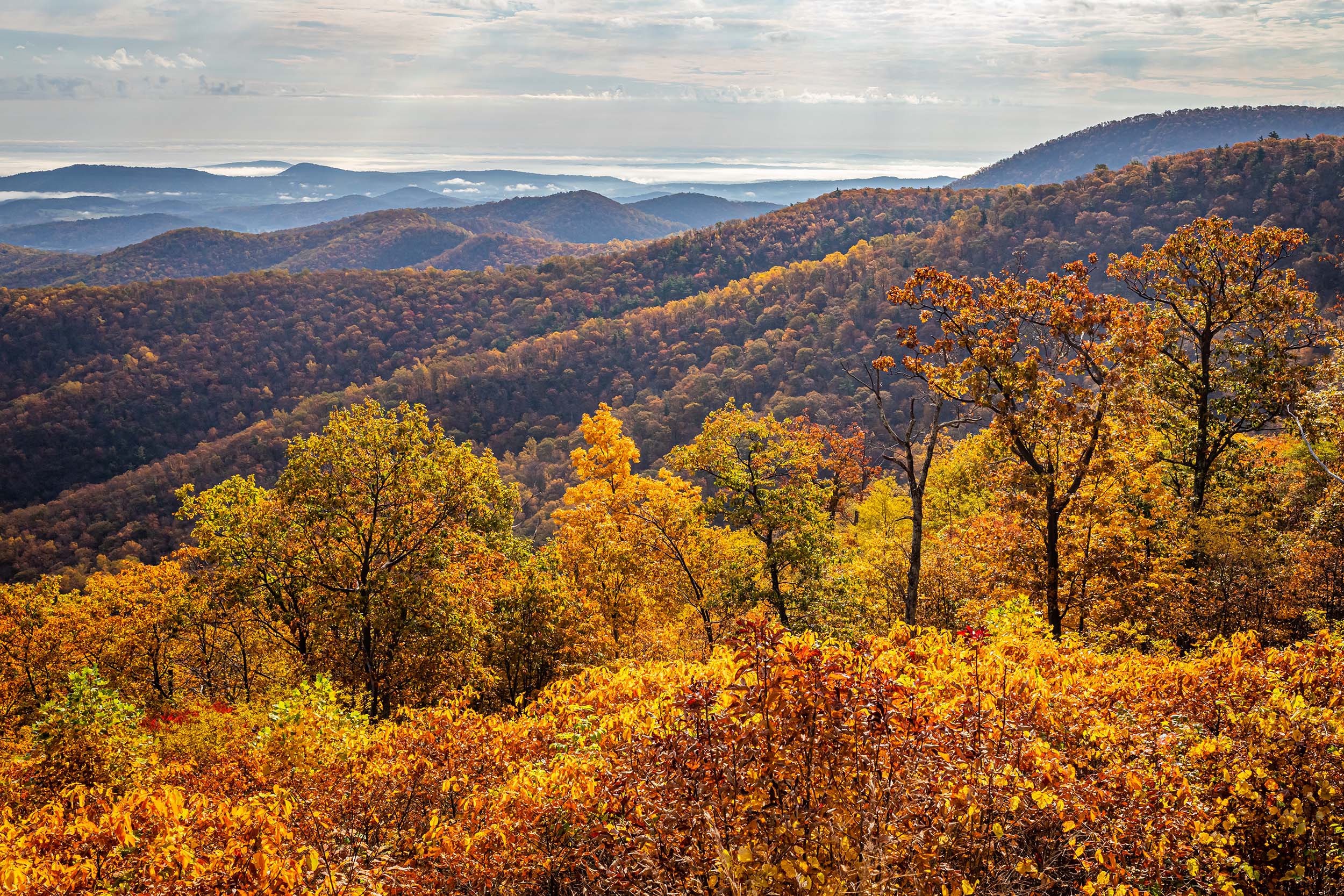
Getting There
How to Travel to Shenandoah National Park
Getting to Shenandoah National Park is straightforward, with multiple access points along Skyline Drive, the park’s main scenic route. The park has four main entrances: Front Royal at the northern end, Thornton Gap near Luray, Swift Run Gap near Elkton, and Rockfish Gap near Waynesboro. If you’re driving from Washington, D.C., the northern entrance at Front Royal is just about 75 miles away and can be reached via I-66 west and Route 340 south. For those traveling from the south, Rockfish Gap connects seamlessly with I-64, making it a convenient gateway for visitors coming from Charlottesville or Richmond.
If you’re flying in, the closest airports are Dulles International Airport (about 60 miles from the Front Royal entrance) and Charlottesville-Albemarle Airport (around 30 miles from the Rockfish Gap entrance). Renting a car is the best way to explore the park, as Skyline Drive spans the length of Shenandoah and public transportation within the park is unavailable. Along the way, nearby towns like Luray, Harrisonburg, and Staunton offer lodging options, restaurants, and local attractions if you want to extend your stay or explore the surrounding areas.
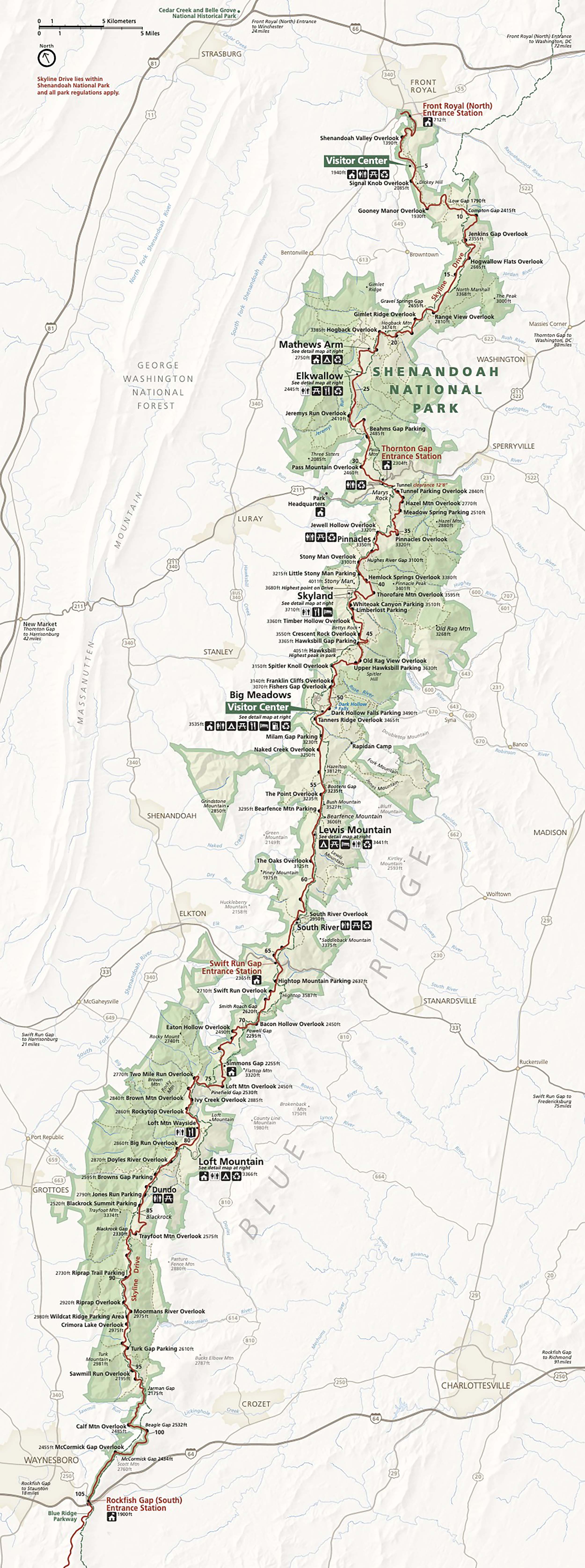
Camping
Big Meadows Campground
- Location: Mile 51.2 on Skyline Drive.
- Features: 200+ campsites, including tent, RV, and group sites. Amenities include restrooms, fire pits, picnic tables, and a camp store. Some sites have access to potable water.
- Highlights: Close to Big Meadows area with trails like Dark Hollow Falls, the Byrd Visitor Center, and abundant wildlife viewing opportunities.
Loft Mountain Campground
- Location: Mile 79.5 on Skyline Drive.
- Features: Over 200 campsites for tents and RVs. Facilities include restrooms, potable water, picnic tables, fire pits, and a camp store.
- Highlights: Perched on a mountain ridge offering incredible sunset views. Nearby trails include Doyles River Falls and the Appalachian Trail.
Lewis Mountain Campground
- Location: Mile 57.5 on Skyline Drive.
- Features: Smallest campground in the park, offering 30 campsites. Facilities include restrooms, picnic tables, fire pits, and potable water. A camp store with showers and laundry is nearby.
- Highlights: Quieter and more secluded, ideal for families or visitors seeking a peaceful camping experience. Access to the Appalachian Trail.
Mathews Arm Campground
- Location: Mile 22.1 on Skyline Drive.
- Features: 166 campsites for tents and RVs. Facilities include restrooms, picnic tables, fire pits, and potable water.
- Highlights: Located in the park’s northern section, close to Overall Run Falls, the tallest waterfall in the park.
Dundo Group Campground
- Location: Mile 83.7 on Skyline Drive.
- Features: Group camping only, with sites accommodating up to 25 people. Includes picnic tables, fire pits, and restrooms. No potable water available, so campers must bring their own.
- Highlights: Secluded and perfect for groups looking to enjoy a private experience.
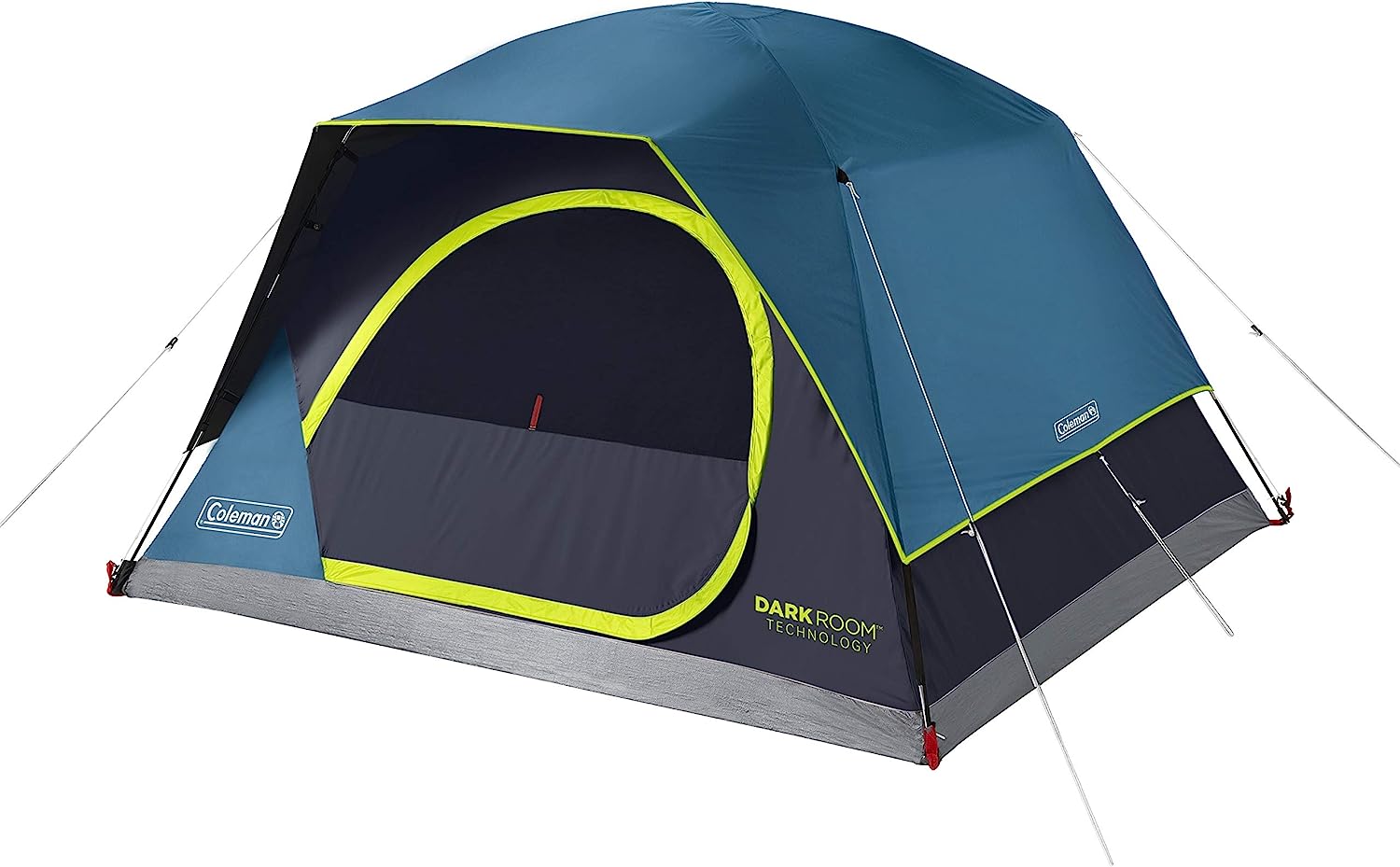

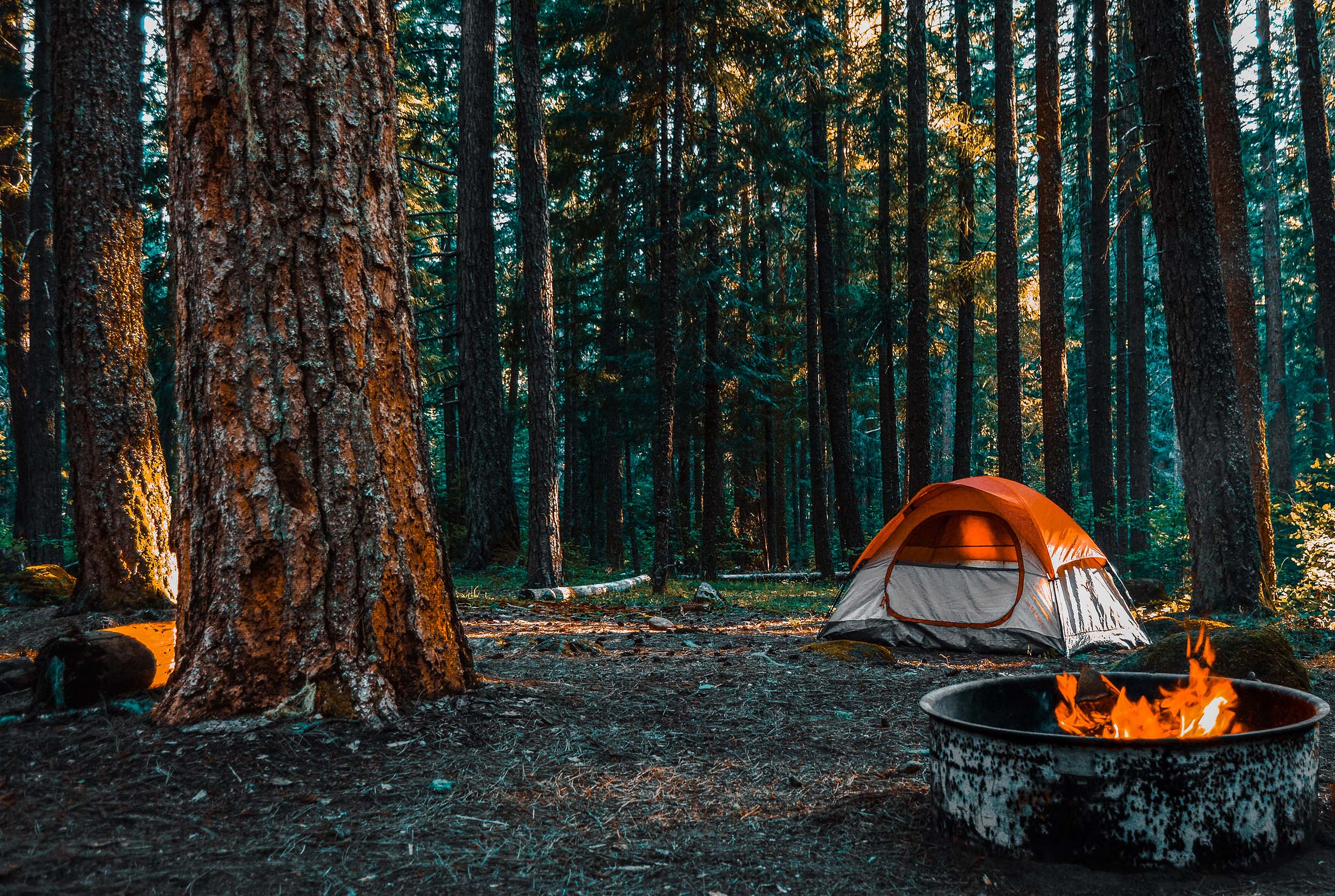
Popular Hiking Trails
Old Rag Mountain Loop
- Length: Approximately 9.2 miles
- Difficulty: Strenuous
- Highlights: This iconic trail features rock scrambles and offers panoramic views from the summit. It’s one of the most popular hikes in the park, so expect crowds, especially on weekends.
Hawksbill Mountain Summit
- Length: 2.2 miles round trip
- Difficulty: Moderate
- Highlights: This trail leads to the highest point in the park at 4,050 feet, offering expansive views of the Shenandoah Valley.
Whiteoak Canyon Trail
- Length: 4.6 miles round trip to the first waterfall
- Difficulty: Moderate
- Highlights: Features a series of six waterfalls, with the first being the tallest at 86 feet. The trail offers multiple cascades and swimming holes.
Cedar Run Trail
- Length: 3.4 miles round trip
- Difficulty: Strenuous
- Highlights: This trail features waterfalls, swimming holes, and natural rock slides, offering a refreshing experience during warmer months.
Doyles River Falls Trail
- Length: 3.2 miles round trip
- Difficulty: Moderate
- Highlights: Features two waterfalls—28 and 63 feet respectively—set in a serene forested area.
Dark Hollow Falls Trail
- Length: 1.4 miles round trip
- Difficulty: Moderate
- Highlights: A short but steep trail leading to a picturesque 70-foot waterfall. It’s one of the park’s most frequented waterfall hikes.
Stony Man Trail
- Length: 1.6 miles round trip
- Difficulty: Easy
- Highlights: A gentle ascent to the park’s second-highest peak, providing stunning vistas with minimal effort.
Bearfence Mountain Trail
- Length: 1.2 miles round trip
- Difficulty: Moderate
- Highlights: Includes a rock scramble leading to a 360-degree view of the park, making it a favorite for adventurous hikers.
South River Falls Trail
- Length: 3.3 miles round trip
- Difficulty: Moderate
- Highlights: Leads to an 83-foot waterfall, with an option to hike to an overlook or descend to the base of the falls.
Mary's Rock via the Pinnacle
- Length: 3.7 miles round trip
- Difficulty: Moderate
- Highlights: Offers expansive views of the northern section of the park and the Shenandoah Valley.
Hiking Trails in Shenandoah National Park
Hiking in Shenandoah National Park is an immersive experience that combines stunning natural beauty with a sense of adventure. Located along Virginia’s Blue Ridge Mountains, the park offers over 500 miles of trails, ranging from gentle walks to rigorous climbs. Visitors can explore lush forests, cascading waterfalls, and panoramic mountain vistas, making it a favorite destination for nature enthusiasts and outdoor adventurers. The trails cater to all skill levels, whether you’re seeking a peaceful stroll like the Limberlost Trail or a heart-pumping rock scramble on Old Rag Mountain.
One of the highlights of hiking in Shenandoah is the park’s diverse ecosystems, which shift with the seasons. In spring, wildflowers bloom along the trails, while summer brings verdant foliage and the refreshing mist of waterfalls like Dark Hollow Falls. Autumn is particularly magical, as the park’s hardwood forests blaze with red, orange, and yellow hues, drawing visitors from all over for the iconic fall foliage. Even winter offers a unique charm, with quieter trails, snow-dusted peaks, and unobstructed views of the Shenandoah Valley. Each hike reveals a unique aspect of the park’s natural splendor.
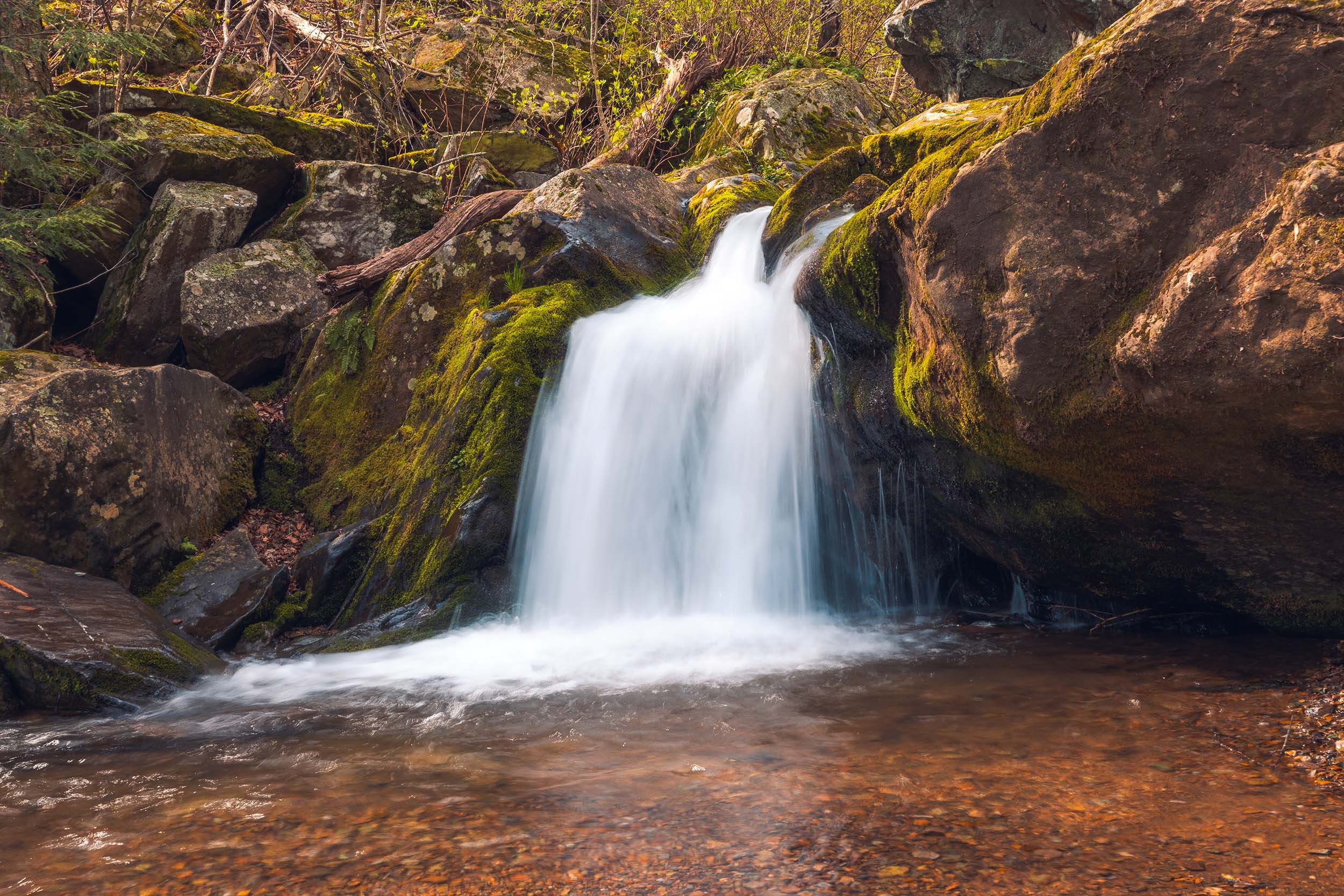
Wildlife at the Park
Shenandoah National Park is a sanctuary for diverse wildlife, offering a glimpse into the rich ecosystems of Virginia’s Blue Ridge Mountains. The park’s expansive forests, meadows, and streams provide habitats for over 200 species of birds, 50 species of mammals, and countless reptiles, amphibians, and insects. Visitors often spot white-tailed deer grazing in open fields or catch a glimpse of a red fox darting through the woods. Birdwatchers flock to the park for the chance to see species like the scarlet tanager, barred owl, and pileated woodpecker, making Shenandoah a haven for avian enthusiasts.
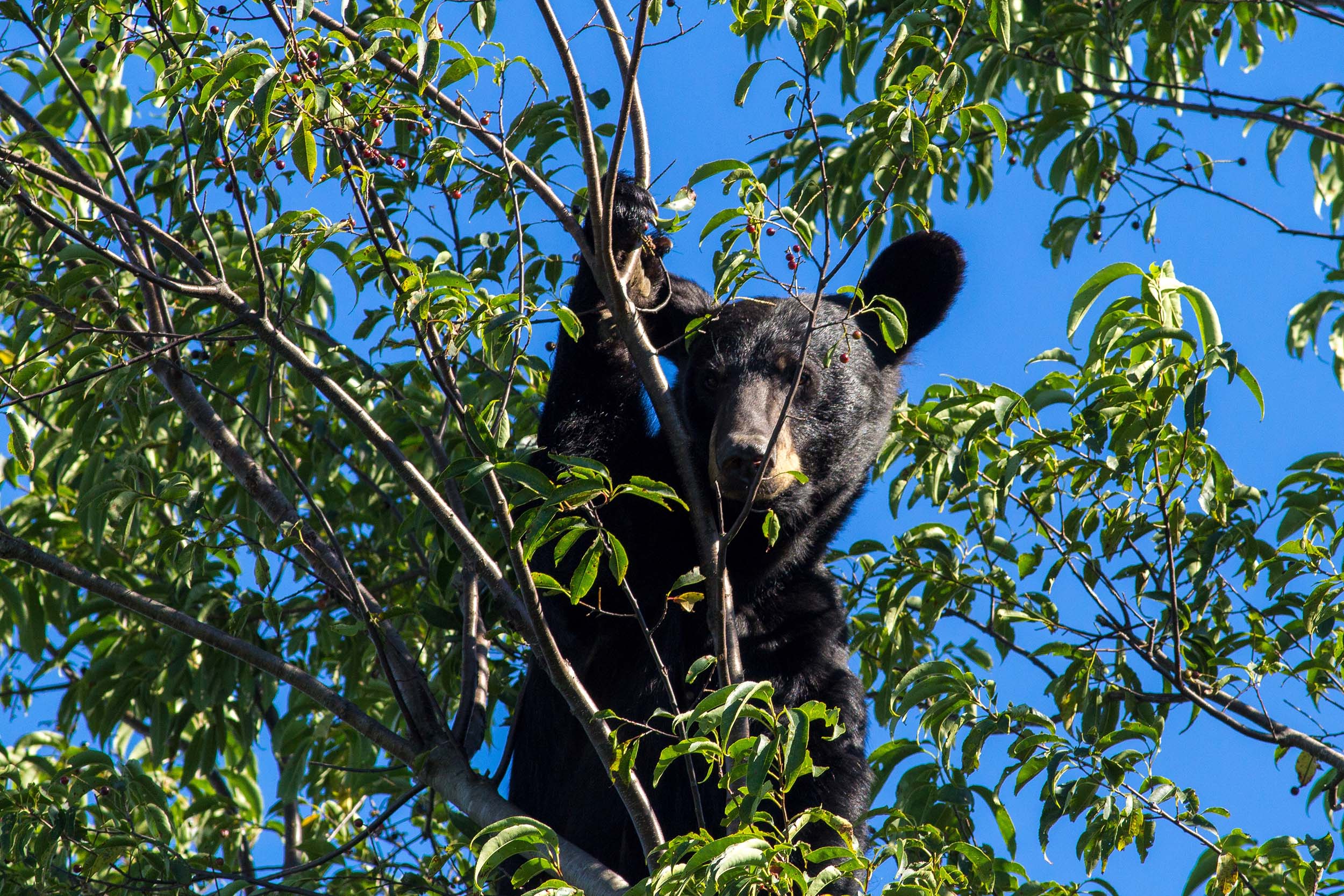
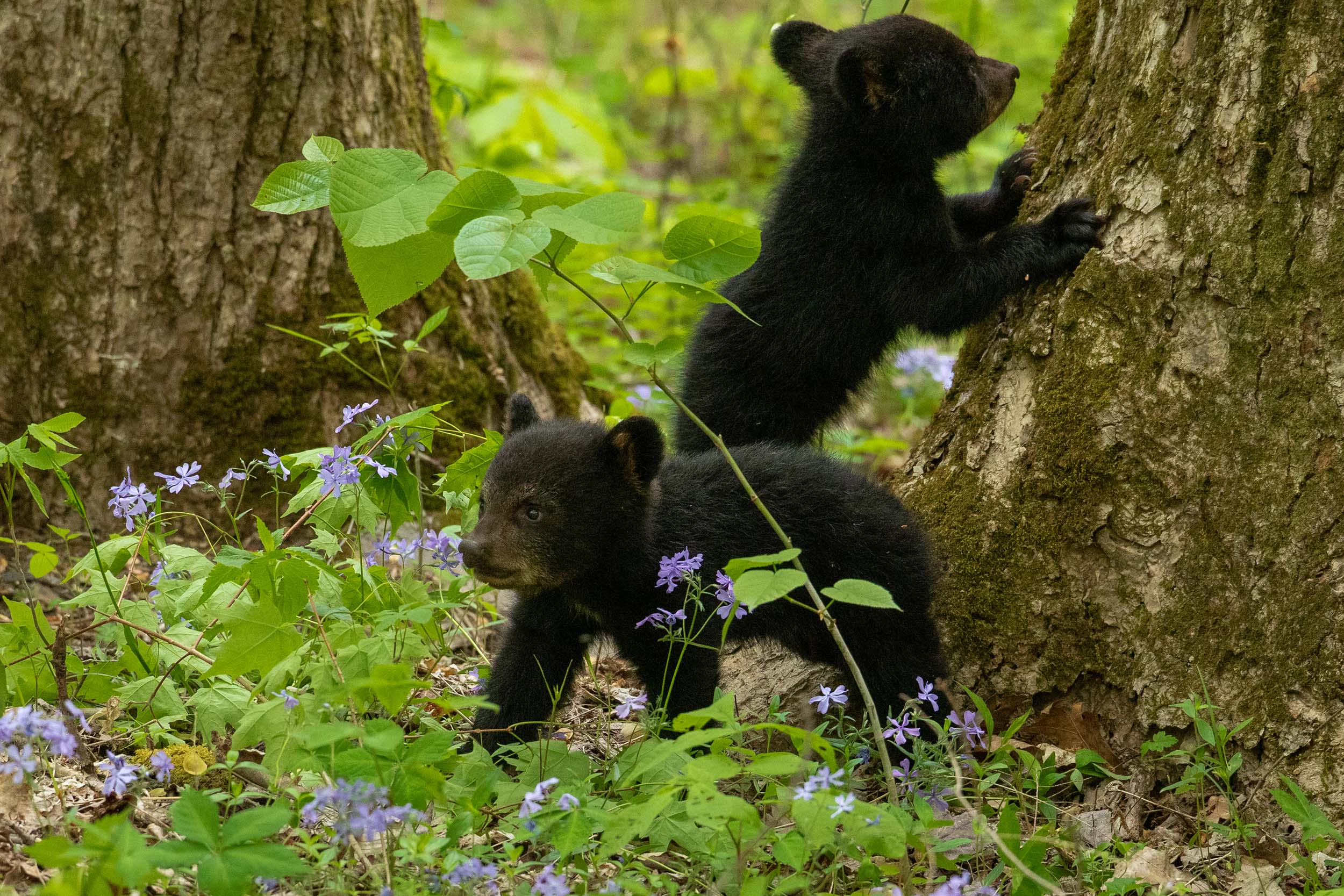
One of the most iconic residents of the park is the black bear. Shenandoah is home to a thriving population of these elusive creatures, often seen foraging for berries or climbing trees. While encounters with bears are rare, they are a reminder of the park’s untamed wilderness. Other mammals, such as bobcats, raccoons, and opossums, contribute to the park’s dynamic ecosystem, each playing a vital role in maintaining ecological balance. Additionally, amphibians like the red-backed salamander thrive in the park’s moist, shaded environments, showcasing its biodiversity.
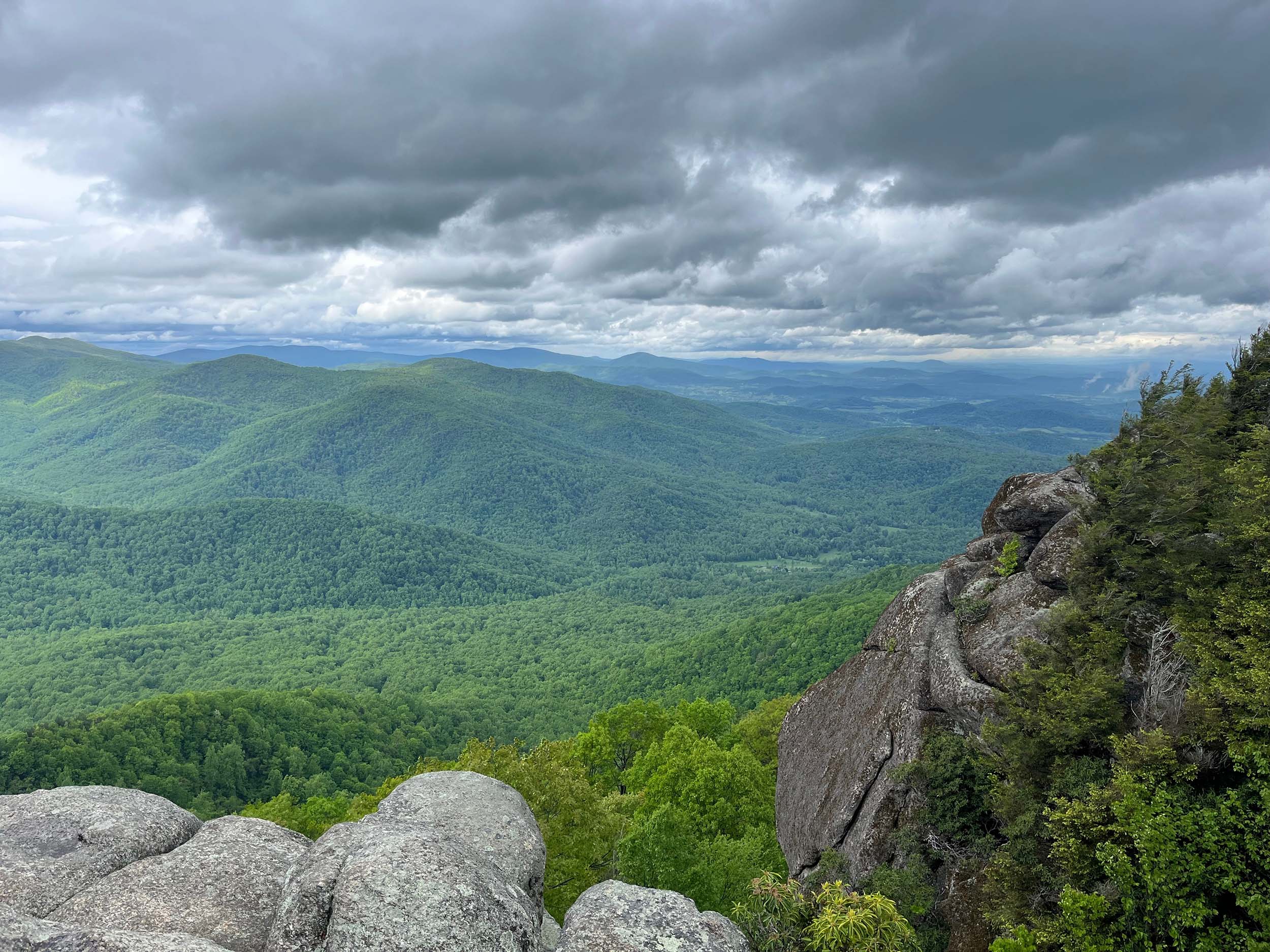
Gear We Used


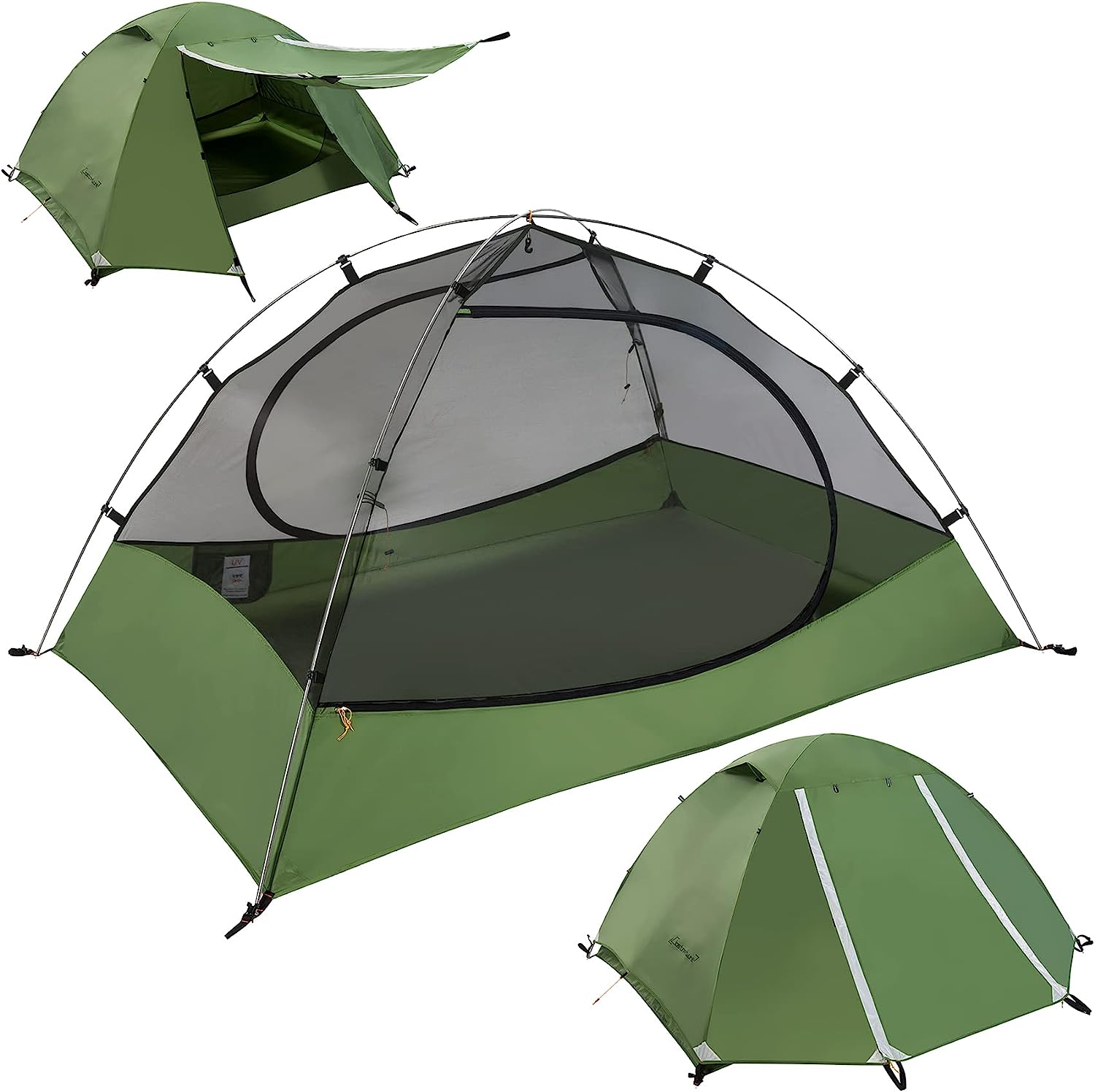

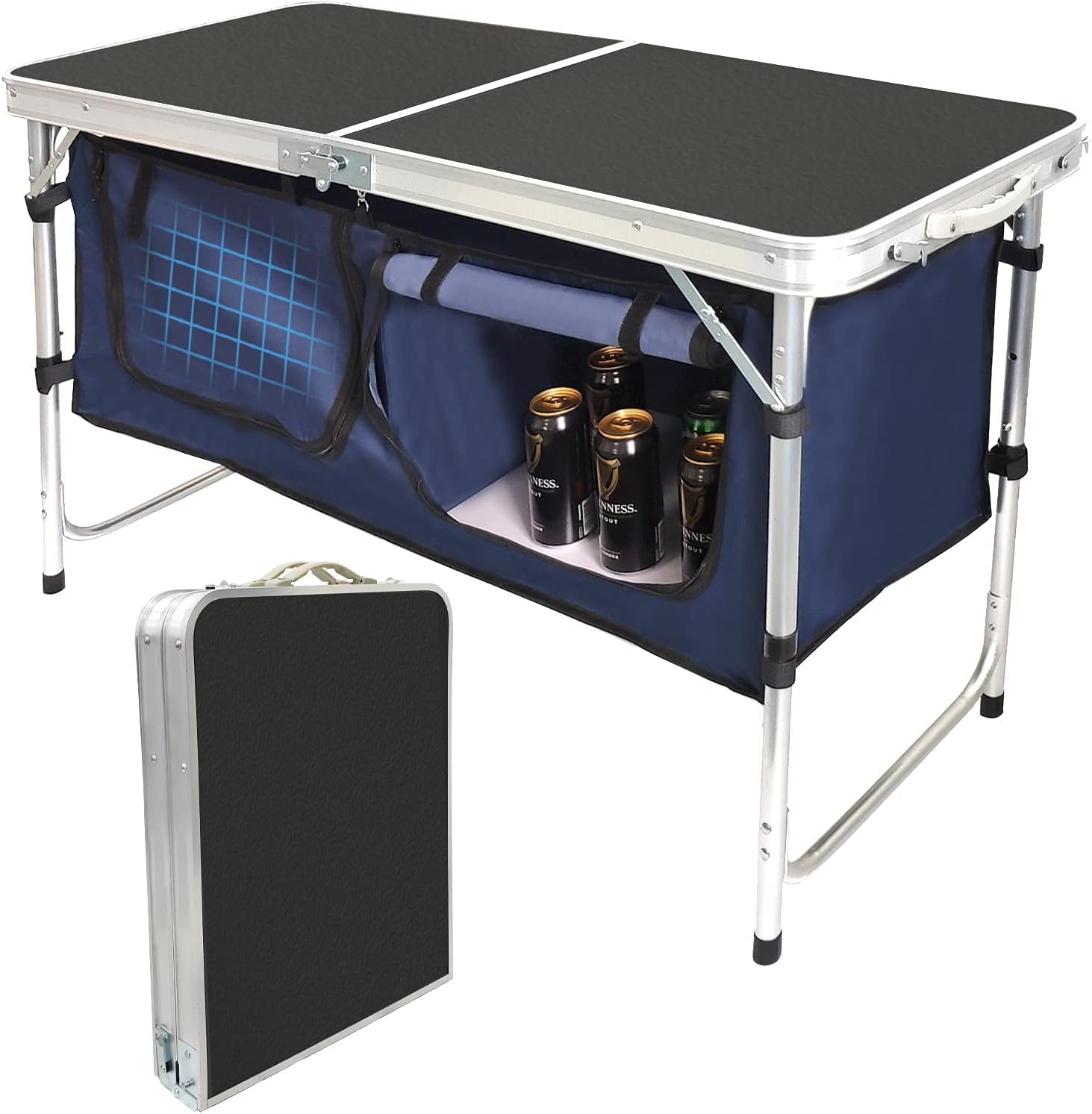
Must-Do Activities
Drive Skyline Drive
Skyline Drive is a 105-mile scenic roadway that runs the length of the park, offering 75 overlooks with sweeping views of the Blue Ridge Mountains and Shenandoah Valley. Whether you’re stopping for photos, enjoying a picnic at an overlook, or spotting wildlife along the roadside, the drive provides an unforgettable way to experience the park’s natural beauty. Plan your visit during the fall for vibrant foliage or in spring for blooming wildflowers.
Explore Waterfalls
Hike a Scenic Trail
Shenandoah is renowned for its hiking trails, offering options for all skill levels. For a challenging adventure, tackle the iconic Old Rag Mountain Loop, known for its rock scrambles and breathtaking summit views. If you’re looking for something more relaxed, try the Dark Hollow Falls Trail, a short but rewarding hike to a stunning 70-foot waterfall. Another excellent choice is the Hawksbill Summit Trail, leading to the park’s highest point with panoramic views of the Shenandoah Valley.
Shenandoah National Park History
Shenandoah National Park has a rich history that reflects both the natural and cultural heritage of Virginia’s Blue Ridge Mountains. The area was home to Indigenous peoples for thousands of years, with evidence of early Native American settlements and hunting activities still visible in archeological findings. European settlers arrived in the 1700s, transforming the landscape through farming, logging, and small-scale industries. By the early 20th century, the land had been shaped by generations of human activity, creating a patchwork of farms, orchards, and rural communities.
The park’s creation in the 1930s marked a significant chapter in American conservation history. Shenandoah was established as part of the New Deal initiative under President Franklin D. Roosevelt, aimed at creating jobs and preserving natural beauty. To make way for the park, the federal government acquired over 300,000 acres of land, often through eminent domain. This led to the displacement of many families who had lived in the mountains for generations. Despite the hardships faced by these communities, their legacy endures in the park’s preserved homesteads, cemeteries, and cultural artifacts.





